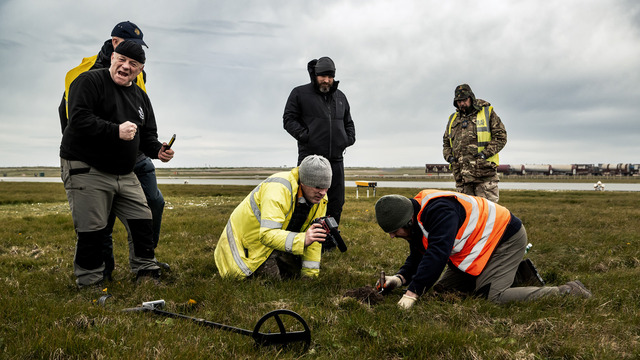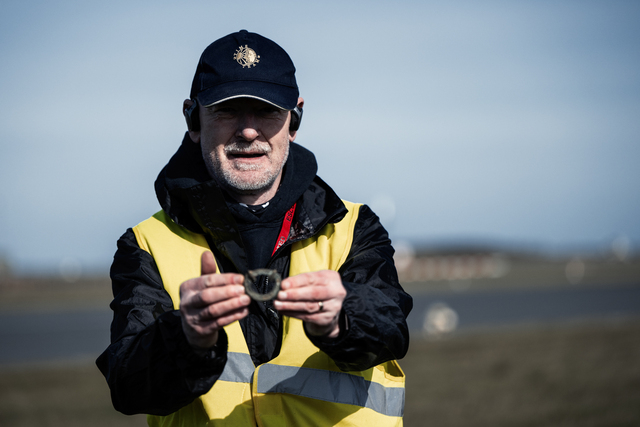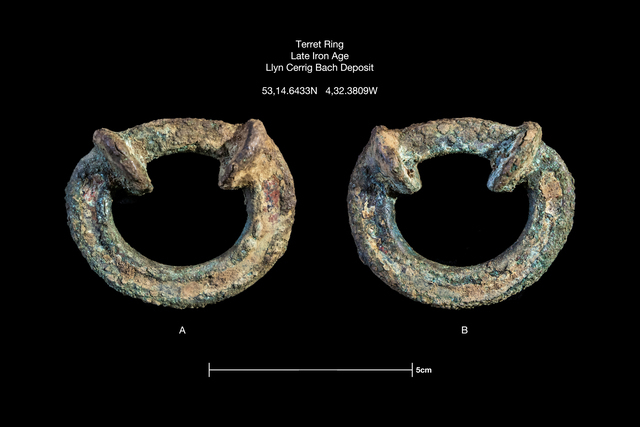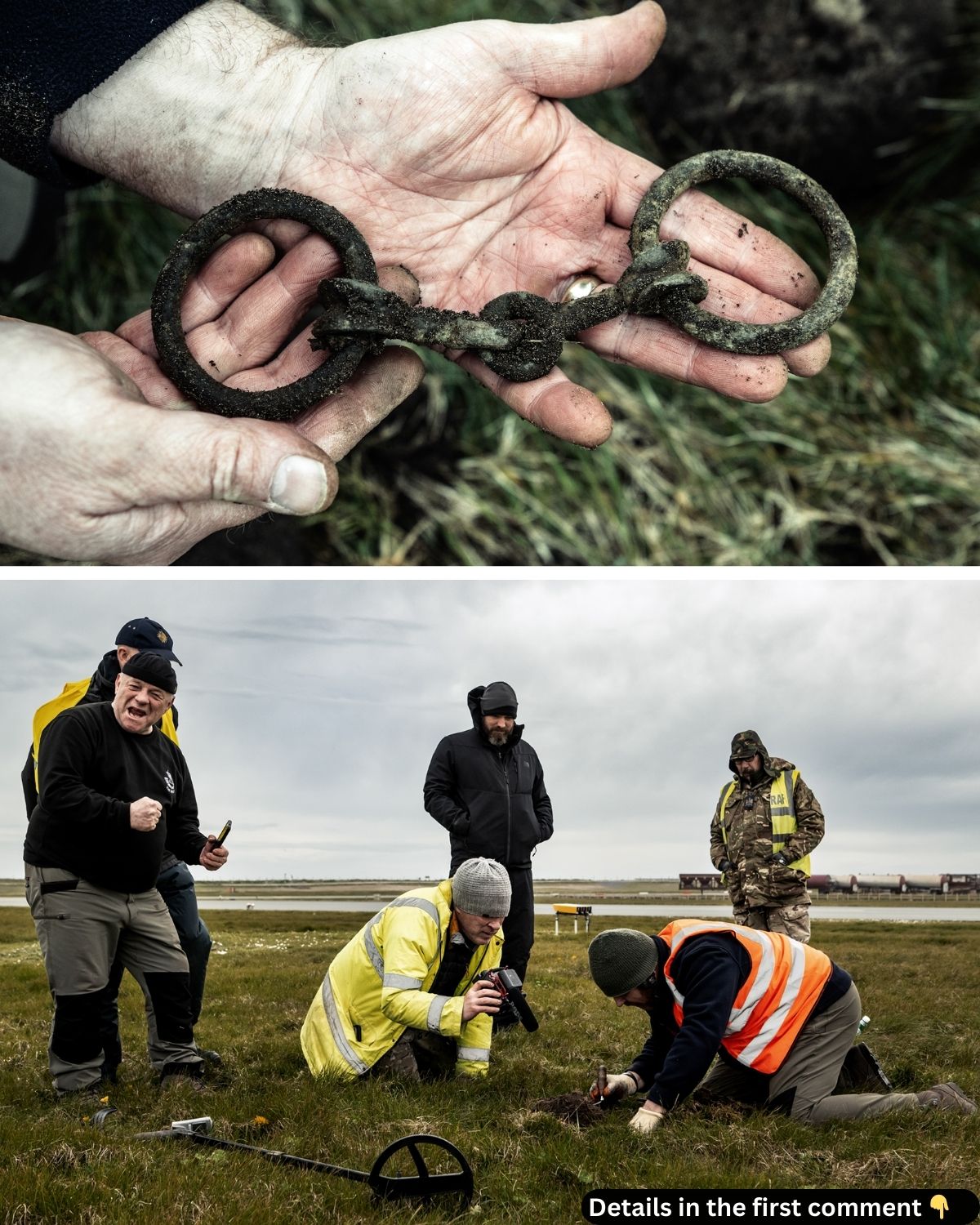Beneath the tarmac of RAF Valley in Anglesey, a treasure trove of Iron Age relics has been unearthed, shedding light on a long-forgotten past. In a unique collaboration between military personnel, veterans, and archaeologists, ancient artifacts such as a Celtic chariot piece and a horse bridle-bit were discovered—offering a rare glimpse into the lives of Iron Age peoples. These remarkable finds, now officially recognized as national treasures, not only enrich our understanding of the past but also celebrate the ongoing legacy of military personnel’s contributions to archaeology.
The Iron Age Treasures Unveiled
As the excavation team worked on the site, they uncovered artifacts that tell stories of the past. The terret ring, an exceptional find, was used to guide the reins of a chariot—a piece of ancient equipment used by Celtic warriors to control their horses during battle or ceremonial rides. The terret ring is particularly significant because only three examples of this style with the same rare red inlay have been found in Wales. This fine craftsmanship, coupled with its rarity, underscores the intricate skills of the Iron Age peoples in the region.


Among the other significant finds was a horse bridle-bit, dated around 60 CE, which closely resembles pieces found in the Polden Hill hoard in Somerset. This bridle-bit was discovered by RAF Flight Sergeant Graham Moore, who described the moment of finding the artifact as a mix of disbelief and excitement. “At first, the team thought I was joking, but when they realized what I had uncovered, the mood shifted quickly,” Moore recounted. These items offer a direct connection to the ancient cultures that lived in the area, possibly during the time when the Romans were expanding their influence over Britain.
Video
Watch the video to see veterans and personnel uncover Iron Age treasures at an RAF airfield. This surprising discovery brings history to life in an unexpected location!
The Llyn Cerrig Bach Hoard: Connecting the Past
The recent discoveries at RAF Valley connect directly to the renowned Llyn Cerrig Bach hoard, a collection of over 150 bronze and iron objects unearthed in the 1940s. This earlier find is one of the most important archaeological discoveries in the UK, shedding light on the culture and society of the Iron Age in Britain. The hoard, which was found during expansion work at RAF Valley in World War II, was originally believed to be a burial offering to the gods. The newly discovered items further expand our understanding of the wealth, craftsmanship, and rituals of the time.

The terret ring, bridle-bit, and other items found in the latest excavation likely belong to the same hoard, though they had remained hidden for centuries. Archaeologists had long suspected that there was more to uncover at the site, and these recent finds have proven that theory correct. Together, they form an essential piece of the puzzle that connects Wales to the broader cultural and military exchanges between the Celtic tribes and the Roman Empire.
The Role of Veterans and Military Personnel in the Excavation
The real highlight of this excavation is the involvement of military personnel and veterans through the Operation Nightingale program. Operation Nightingale is a rehabilitation initiative that uses archaeology as a tool to help veterans recover from physical and mental injuries. For the participants, the program is not only a way to reconnect with history but also an opportunity to heal through fieldwork and active engagement in uncovering the past.

Veterans like retired RAF Squadron Leader David Ulke, who discovered the terret ring, have expressed deep pride in their contributions. “I’ve been involved in archaeology for many years, and this was by far the most significant recovery I have ever made,” Ulke shared. For many, the dig was not just about finding artifacts but about feeling part of something larger—an exploration into history that connects them to something greater than their individual experiences.
As these veterans sifted through the soil, they were not only uncovering treasures from the past but also uncovering parts of themselves. For some, the process of discovering these ancient items was a way to heal, to rebuild strength, and to reconnect with their physical and mental well-being. Their participation underscores the profound impact that archaeology can have on individuals recovering from trauma.
The National Treasure: Importance of the Find
The artifacts discovered at RAF Valley are more than just pieces of the past—they are officially recognized as a national treasure. Declaring them as such means that these items will be preserved and studied, and their significance to Welsh and UK history will be shared with the public. These finds are not only an exciting chapter in archaeology but also provide a crucial link between the ancient and modern worlds.
These discoveries will soon be on display at Oriel Môn and the Museum of Wales, where they will be housed alongside the original Llyn Cerrig Bach collection. For visitors and researchers alike, these artifacts will offer an unparalleled opportunity to explore the history of the Iron Age in Wales and beyond. The fact that these artifacts were uncovered by veterans and military personnel adds a personal connection to the site, allowing for a deeper understanding of how the past continues to shape the present.
The Archaeological Significance: Understanding the Roman Influence

These finds are not just exciting because of their rarity but also because they offer a glimpse into the complex relationships between the Celtic tribes and the Romans. The terret ring, the bridle-bit, and other items reveal the technological advances of the time, including the use of advanced metallurgy, horse training for warfare, and chariotry. The craftsmanship involved in creating such items suggests a high level of skill and an intimate knowledge of Roman military tactics.
The influence of Roman culture on the Celtic tribes is evident in the artifacts. The terret ring, for example, was used in the chariotry that was influenced by Roman warfare techniques. This suggests that, even in remote areas like Anglesey, the reach of Roman military power and cultural influence was vast. As archaeologists continue to study these items, they will undoubtedly uncover more about the interactions between the native Celtic peoples and the invading Romans, providing critical insights into the history of the region.
The Collaboration: How the Excavation Came to Be

The success of the excavation is a result of careful planning and collaboration between multiple organizations, including the Defence Infrastructure Organisation (DIO) and the veterans participating in Operation Nightingale. This partnership highlights the importance of teamwork in archaeological research and the benefits of involving the local community, particularly those who have served in the military.
Through Operation Nightingale, veterans not only contributed to uncovering historical treasures but also gained valuable skills in archaeology. The DIO’s involvement in the excavation allowed for a seamless integration of military personnel into the archaeological process, ensuring that the excavation was conducted with both efficiency and respect for the site’s historical significance.
The Continuity of RAF Valley as an Archaeological Site
RAF Valley has proven to be a site of continuous historical importance. From its role in preparing for World War II to its earlier connection with the Llyn Cerrig Bach hoard, the site has offered a wealth of discoveries that illuminate the history of Wales and its relationship with the wider world. These ongoing discoveries highlight the significance of RAF Valley as a crucial archaeological location, one that continues to offer new insights into the past.
Conclusion: A Legacy Unearthed
The recent excavation at RAF Valley has not only uncovered treasures of immense historical value but also revealed the profound connection between the past and the present. These discoveries offer a glimpse into the lives of the people who lived on Anglesey thousands of years ago and provide a tangible link between the ancient Celts and the Romans. Through the efforts of military personnel, veterans, and archaeologists, the history of this region is being rediscovered, ensuring that these treasures will be preserved for generations to come.
As the artifacts are prepared for display at Oriel Môn and the Museum of Wales, they serve as a reminder of the rich history that lies beneath our feet—waiting to be uncovered. And for the veterans and military personnel who participated in this excavation, the process of discovery has become a journey of healing and reflection, making this excavation as meaningful as the treasures it unearthed.
Video
Check out the video to discover how a 2,000-year-old coin uncovers an Iron Age political mystery. This find offers new insights into ancient history!



